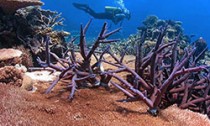
The world is experiencing its third mass coral bleaching event. Due to elevated temperatures at tropical locations over the whole planet, large populations of corals are starting to turn white. This is bad, as bleaching can lead to large-scale decreases in coral health and ultimately their death. Coral reefs provide shorelines with protection from storms, are foundational to tropical tourism and provide critical habitat to thousands of species. Large-scale coral death following mass bleaching leads to reef erosion, loss of shoreline protection, loss of tourism income and the livelihoods that depend on them, and loss of critical habitat.
Following the last mass bleaching event in 1997-98, 16% of the world’s corals died...
Read More












Social Profiles